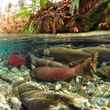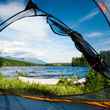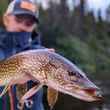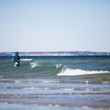I go through life with, for the most part, a cavalier attitude. I’m lousy with organization, terrible with abiding by deadlines, dismissive of rules and regulations due to their perceived silliness and critical of people who spend their time compulsively obsessing over minutiae. While it is fair to say that this approach to life most certainly causes me some level of complication, it is a personality trait I’m proud of, one I embrace. Put simply, I believe things generally tend to work out, and that obsessing over details is a waste of time. That is, except when it comes to fly rigs.
When on the water, I strive to obsess over minutiae. That’s my goal. I haven’t gotten there yet. But I’m trying. This means rebelling against my every instinct. And it isn’t easy. But I believe it is important. As opposed to the rest of life’s silly details, which require attention I’m unwilling to devote, obsessing over your fly rig is not only not a waste of time, it’s essential.
If I fail to renew my driver’s license before it expires, I can still drive (albeit illegally). Forget to pay the water bill on time? I can still take a shower (for a while). But, if I fail to pay attention to my fly rig, to regularly check that it remains the same rig I built and tossed into the water before casting it, there’s a good chance I’m no longer fishing.





























